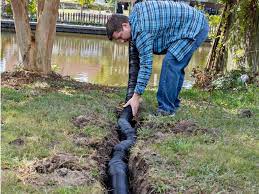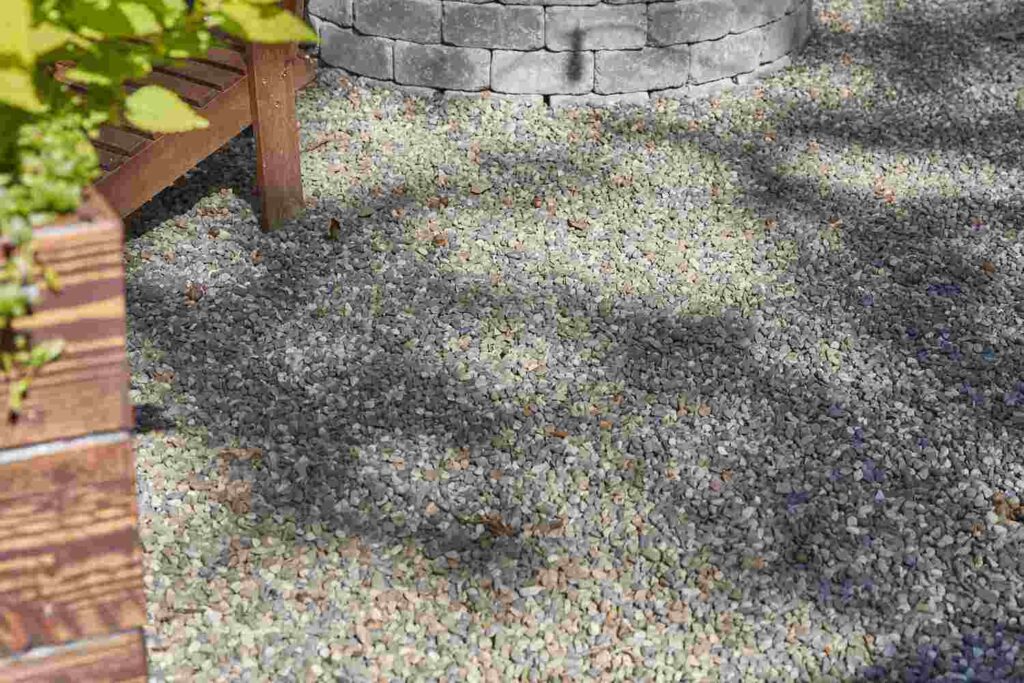Green thumbs! If you’ve got a small yard, you know the struggle is real when it comes to drainage issues. But fear not – we’ve got your back with some wallet-friendly DIY solutions to keep your little oasis from turning into a waterlogged mess. In this blog post, Liberty Heritage Nursery Farm helps to explore creative and budget-savvy ways to tackle poor drainage, from charming rain gardens to cleverly designed French drains. Let’s turn that soggy headache into a flourishing haven without breaking the bank. So, grab your gardening gloves, and let’s dive into the world of DIY drainage for small yards!
Understanding Drainage Issues

Before delving into the DIY solutions, it’s crucial to understand the common causes of poor drainage in small yards. Factors such as compacted soil, improper slope, and inadequate water runoff can lead to standing water, making it challenging for plants to thrive. Identifying the root cause will guide you in choosing the most effective DIY drainage solution.
Before diving into DIY solutions, it’s crucial to grasp the common culprits behind poor drainage in small yards. Compacted soil, improper slopes, and insufficient water runoff can wreak havoc, leading to waterlogged nightmares. Identifying these issues is the key to selecting the right fix for your specific problem. So, let’s roll up our sleeves and take a closer look at what’s causing those puddles, ensuring our DIY drainage efforts hit the bullseye.
Rain Gardens:
One cost-effective and eco-friendly solution to drainage problems is the creation of a rain garden. Rain gardens are designed to absorb and manage excess water, preventing runoff and reducing the risk of soil erosion. Select an area in your yard with poor drainage, dig a shallow basin, and fill it with a mix of native plants that can absorb water effectively.
Rain gardens are a savvy and eco-friendly solution to tackle drainage problems in your small yard. By creating a designated area filled with native plants, rain gardens efficiently absorb excess water, preventing runoff and soil erosion. These vibrant gardens not only add aesthetic charm but also play a vital role in maintaining a balanced water cycle, making them an excellent DIY option for those looking to enhance drainage while promoting biodiversity in their outdoor space.
These gardens act as natural sponges, soaking up rainwater and preventing it from pooling in undesired areas. They’re a visually appealing and sustainable way to manage water flow, turning drainage challenges into opportunities for fostering a thriving ecosystem right in your backyard. When considering the right drainage system for your lawn, rain gardens stand out as a visually appealing and eco-friendly choice. These gardens not only absorb excess water efficiently but also contribute to a balanced ecosystem in your outdoor space. By incorporating a rain garden, you’re not just addressing drainage issues; you’re making a sustainable and aesthetically pleasing choice that enhances the overall health and resilience of your lawn.
French Drains:
French drains are a classic and efficient way to redirect excess water away from your small yard. To create a French drain, dig a trench and line it with landscape fabric to prevent soil from clogging the drain. Fill the trench with gravel and place a perforated pipe on top. Cover the pipe with more gravel and landscape fabric, allowing water to flow through while preventing debris buildup.
French drains are a reliable DIY solution to redirect excess water away from your small yard. By digging a trench and installing a perforated pipe surrounded by gravel, these drains efficiently channel water to a desired location. This prevents waterlogging, protecting your plants and ensuring proper soil drainage. French drains are cost-effective and straightforward, making them a practical choice for tackling drainage issues in small yards.
Dry Creek Beds:
Incorporating a dry creek bed into your small yard not only adds aesthetic appeal but also helps with drainage. Dig a shallow, winding trench and line it with rocks or river pebbles to mimic a natural stream. This allows water to flow freely through the bed, preventing puddles and creating an attractive focal point in your garden.
Dry creek beds are not just aesthetically pleasing but also serve as effective drainage solutions for small yards. By creating a shallow, winding trench and lining it with rocks or river pebbles, you mimic the appearance of a natural stream. This not only adds a charming focal point to your garden but also helps manage excess water. The rocks and pebbles allow water to flow freely, preventing pooling and encouraging absorption into the soil.
Strategic placement of dry creek beds in areas prone to water accumulation enhances both functionality and visual appeal. With a touch of creativity, you can transform a potential drainage issue into a landscaping feature, making your small yard both functional and beautiful.
Elevated Plant Beds:
If your yard suffers from poor drainage due to compacted soil, consider elevating your plant beds. Build raised beds using affordable materials like cinder blocks or untreated wood. Elevated beds allow for better water drainage, promoting healthier plant growth and preventing waterlogged soil.
Elevated plant beds offer a practical solution to combat poor drainage in small yards. By constructing raised beds using materials like cinder blocks or untreated wood, you provide plants with well-drained soil, preventing waterlogging. These beds not only enhance drainage but also offer better control over soil composition, fostering healthier plant growth. Elevating your plant beds not only mitigates drainage issues but also adds a dynamic dimension to your garden, allowing you to customize the height and design for both functionality and aesthetic appeal.
Gutters and Downspouts:
Sometimes, the simplest solutions are the most effective. Ensure that your gutters and downspouts are directing water away from your small yard. Extend downspouts to deposit water farther from the house and create strategic pathways for runoff to follow, preventing waterlogging in specific areas.
Properly functioning gutters and downspouts play a crucial role in managing water runoff around your home. By directing rainwater away from the foundation, you can prevent potential drainage issues in your small yard. Regular maintenance of these components ensures they effectively channel water, reducing the risk of waterlogging. For a comprehensive drainage solution service, consider professional services that assess and optimize your gutter system. Experts can recommend improvements, such as downspout extensions or redirecting runoff, enhancing the overall effectiveness of your drainage strategy and protecting your small yard from water-related challenges.
Permeable Paving:
Replace traditional impermeable surfaces with permeable alternatives to enhance water absorption. Gravel, permeable pavers, or even a mix of grass and pavers can help reduce surface runoff, allowing rainwater to penetrate the soil and alleviate drainage issues. Permeable paving is a smart choice for addressing drainage concerns in small yards. Whether using gravel, permeable pavers, or a combination of grass and pavers, these surfaces allow rainwater to penetrate the ground, reducing surface runoff. This cost-effective solution helps prevent waterlogging and contributes to sustainable water management in your outdoor space.
Permeable paving not only addresses drainage concerns but also aligns with the numerous benefits of hardscaping. This eco-friendly solution allows rainwater to seep through, minimizing surface runoff and preventing waterlogging. By incorporating permeable paving into your hardscape design, you not only enhance drainage but also create a functional and visually appealing outdoor space.
Aeration and Soil Amendments:

Improve soil structure and water absorption by aerating your lawn and incorporating organic matter. Aeration reduces compaction, allowing water to penetrate the soil more effectively. Additionally, adding compost or well-rotted manure enhances soil quality, promoting better drainage.
Boost your small yard’s drainage capacity by incorporating aeration and soil amendments. Aerating your lawn relieves soil compaction, promoting better water absorption. Complement this with soil amendments like compost or manure to enhance overall soil quality. For a hassle-free solution, consider enlisting the expertise of landscaping services. Professionals not only ensure proper aeration and amendments but also provide tailored advice to optimize your yard’s drainage. Investing in these services can transform your outdoor space, creating a lush and well-drained environment for your plants to thrive.
FAQs
How do I drain my yard without slope?
The Most Effective Drainage Solutions for Flat Yards
- French drain. A French drain can be installed by digging a trench and adding a PVC pipe surrounded by gravel.
- Dry well system. A dry well system is another cost-effective drainage method for flat yards.
- Water-absorbing plants. Many plants are great at soaking up water.
How do you make natural drainage?
To create the best flow of water, the best angle for a drainage ditch is downhill or sloping to create a gravitational pull to flow the water away from the yard. A drainage ditch can be left with a gravel or stone bottom or can be planted with grass to disguise the ditch if desired.
What is a dry well for drainage?
A dry well collects stormwater from rooftops or hard surfaces such as your driveway. An underground pipe directs runoff from roof downspouts into the dry well. The dry well is an underground area that is filled with stone or gravel.
How can we make a sustainable drainage system?
Sustainable drainage systems
- A management train – using a number of SuDS components in series and characterising areas into land use and drainage type.
- Source control – managing runoff as close as possible to where it falls as rain.
- Managing water on the surface – wherever possible, runoff should be managed on the surface.
How do you fix soil that doesn’t drain?
Adding lots of organic matter such as compost, farm manure, or shredded leaves to clayey soil will allow it to drain more easily and hold the right amounts of water and air for better plant growth and increased biological activity.
Conclusion
In wrapping up our journey into budget-friendly DIY drainage solutions for small yards, remember that a little creativity and effort go a long way. From charming rain gardens to efficient French drains, these approaches not only address drainage issues but also add character to your outdoor haven. Experiment with different techniques to find what suits your specific needs and budget constraints. By taking proactive steps and transforming challenges into opportunities, you can ensure your small yard remains a flourishing oasis. So, embrace these DIY solutions, and let your green space thrive without breaking the bank. Happy gardening!
